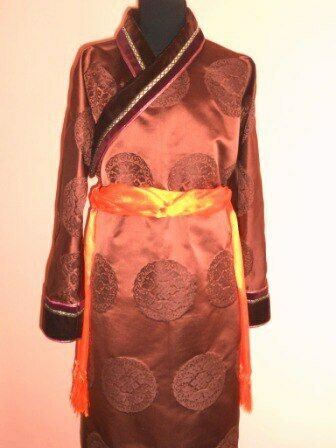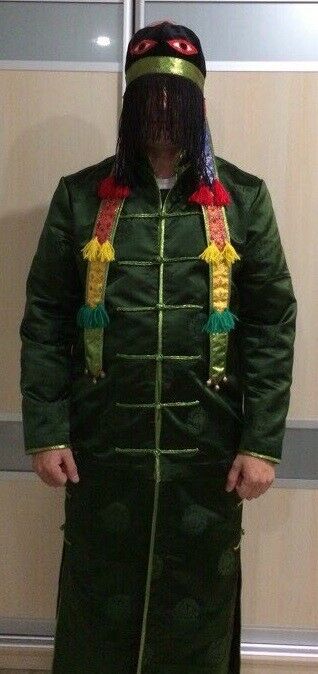-40%
Mongolian Clothing Ethnic Dress
$ 261.09
- Description
- Size Guide
Description
Ethnic costume Buryat-Mongolian DegelWeight approximately 800 grams. Any size.
We need a list of measurements in cm to sew a suit:
A) Height, b) Bust-Chest girth, c) Waist girth, d) Hip girth, g) Shoulder width, h) Sleeve length, k) Neck girth, q) Product length -costume length.
See the description of the measurements in the photo.
Execution time 3 weeks.
Material: Mongolian silk, brocade, velvet.
Handmade. Manufacturers - local seamstresses.
Ethnic costume Buryat-Mongolian Degel
The Buryat national costume (bur. Buryad degel) is a traditional clothing of the Buryat people, part of its centuries-old culture. It reflects its culture, aesthetics and spirit. Traditions in the national Buryat clothing are associated primarily with the nomadic way of life and the harsh continental climate, with extreme temperature fluctuations. Buryat national dress is well adapted to the nomadic way of life. A long ride in the saddle required such clothing, which would not hamper the movement of the rider.
Traditional Buryat clothing was presented in the winter (bur. Degel) and summer (bur. Terlig) variants. Casual degal was sewn mainly from cotton fabric, and festive - from silk, velvet. The well-to-do Buryats sewed costumes from expensive fabrics and furs (sable, Baikal seal, etc.), decorations were made mostly of silver.
Degels have two
layers - the upper (the bur. Gadar horma) and the lower (the bur. Dotor horma), the back (the bur. Ara Tala), in front, the bodice.
The men's dressing gown was usually sewn from fabrics of blue, sometimes brown, dark green, burgundy. Mandatory attribute of men's robe were belts, varied in material, manufacturing techniques and sizes.
Outerwear was straight back, that is, not detachable to the waist, with long hems extending downwards. From one to three silver, coral, and golden buttons were sewn on the collar. The following buttons are sewn on the shoulders, under the arm and the lowest - at the waist. The top buttons were considered to bring happiness, grace. During the prayer services, the rites were unbuttoned with buttons on the collar, so that grace would enter the body without obstacles. Medium buttons regulate the number of offspring, honor and dignity. The bottom buttons were symbols of the fertility of livestock, the material wealth of the owner. The longevity of a person depended, according to the views of the Buryats, the Mongols, even on how to fasten buttons. The canonical scheme of putting on and fastening - from the bottom up - starts from the shoes, then goes to the robe, while buttons are buttoned from the bottom to the top, the latter is put on the cap.




















